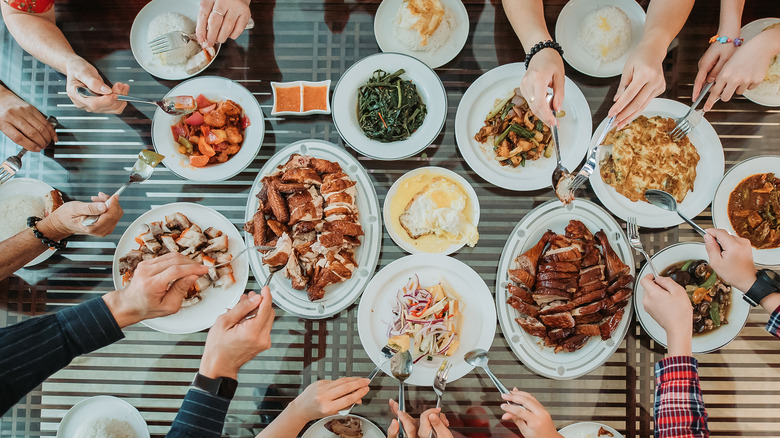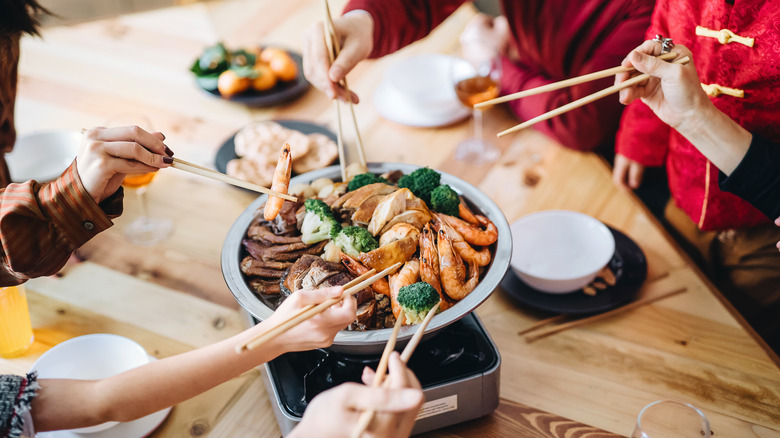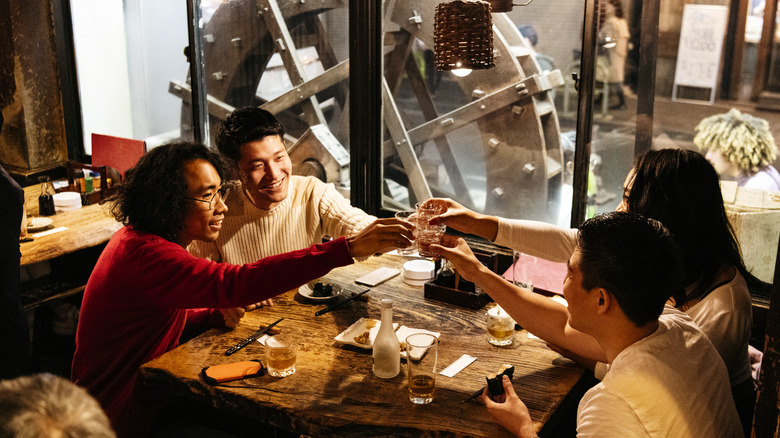Why Ordering Separate Dishes At Chinese Restaurants Is A Mistake
In American restaurant culture, it's common for patrons to order their own individual dishes for their meals. But while you might have the desire for your own portions while dining out, this ordering style may do you more harm than good during your dining experience at a Chinese restaurant. Ordering dishes to share may feel like a dining etiquette mistake if you're not used to it, but it's actually considered polite and traditional in Chinese dining.
It may require some extra planning when ordering, but the benefits of creating a shared order outweigh the additional time spent coordinating. In addition to cutting down on food waste — since the dishes at Chinese restaurants are usually served in large portions intended for sharing — splitting the orders can help you better connect with your tablemates. The act of sharing may remind you of your school days, but give it a try next time you eat out at a Chinese restaurant, and you may just end up appreciating the experience more. After all, it's more closely aligned with how a Chinese meal is meant to be enjoyed.
Communal dining is part of Chinese culture
According to Keats Chinese, an important part of sharing dishes in China comes from the ideal of unity. In a more traditional Chinese dining experience, you may even sit at round tables and eat from round bowls and dishes. This design choice symbolizes more than an aesthetic — it also contributes to the idea of unity at the table. The rounded design makes sharing easier and more accessible to everyone.
While some restaurants may not have rounded tables or serving platters, the communal connection between you and your fellow diners is still an important part of the experience. By sharing dishes — both in working together to decide what to order and in taking food from the same plates — you're building a stronger connection with your tablemates. Sharing helps bring more focus back to the act of eating, the contents of your meal, and respect for those at the table with you.
Chinese tradition also typically calls for the eldest at the table to be served first, then to share dishes clockwise, but most diners today are more relaxed about this piece of etiquette. You may or may not want to consider this tradition the next time you're preparing to order at a Chinese restaurant, but sharing dishes with your table should still be part of your meal even if you're not trying for a traditional Chinese dining experience.
Benefits of sharing dishes
Aligning with Chinese dining etiquette isn't the only reason you should order for the table rather than for individual diners. One of the best benefits of sharing dishes is the chance to try a little bit of everything. Say you're torn between two entrees and a few different sides or appetizers — by agreeing to share, you won't have to worry about making the choice. This is especially nice if you're dining at a new restaurant where you aren't familiar with the menu. Plus, by ordering dishes to share, you can cut down on the final cost of your bill while still getting to try more food.
You also get the opportunity to nutritionally diversify the dishes you order. If you order strategically, everyone at the table has a better chance of getting a balanced meal. You won't need to worry if one thing you order is light on veggies or doesn't have much protein; the nutrition of one dish can easily be bolstered by the addition of something from another plate, making for a more satisfying meal.
Ultimately, by sharing food, you get to experience the meal how it was intended to be enjoyed. If you are struggling with what dishes to pair together and how much to order, you can ask the staff where you're dining what they would suggest. Let them know you plan on sharing so they can bring out the proper amount of plates and utensils to accommodate your table.


